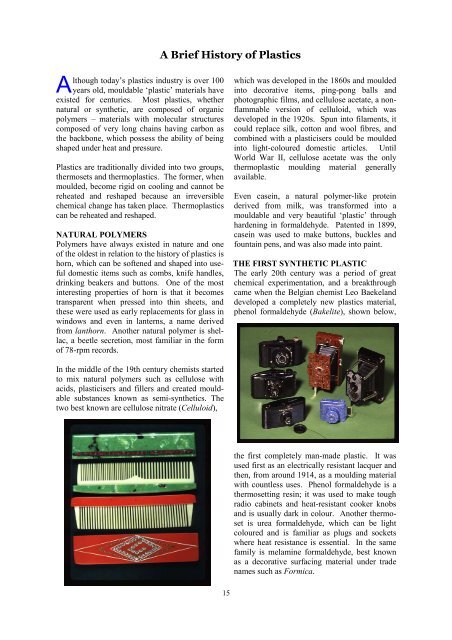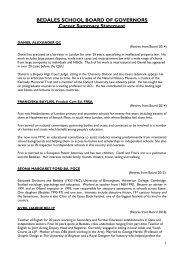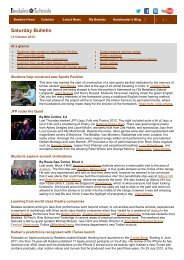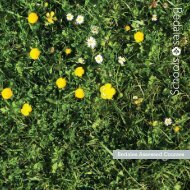Create successful ePaper yourself
Turn your PDF publications into a flip-book with our unique Google optimized e-Paper software.
A Brief History of Plasticslthough today’s plastics industry is over 100A years old, mouldable ‘plastic’ materials haveexisted for centuries. Most plastics, whethernatural or synthetic, are composed of organicpolymers – materials with molecular structurescomposed of very long chains having carbon asthe backbone, which possess the ability of beingshaped under heat and pressure.Plastics are traditionally divided into two groups,thermosets and thermoplastics. The former, whenmoulded, become rigid on cooling and cannot bereheated and reshaped because an irreversiblechemical change has taken place. Thermoplasticscan be reheated and reshaped.NATURAL POLYMERSPolymers have always existed in nature and oneof the oldest in relation to the history of plastics ishorn, which can be softened and shaped into usefuldomestic items such as combs, knife handles,drinking beakers and buttons. One of the mostinteresting properties of horn is that it becomestransparent when pressed into thin sheets, andthese were used as early replacements for glass inwindows and even in lanterns, a name derivedfrom lanthorn. Another natural polymer is shellac,a beetle secretion, most familiar in the formof 78-rpm records.which was developed in the 1860s and mouldedinto decorative items, ping-pong balls andphotographic films, and cellulose acetate, a nonflammableversion of celluloid, which wasdeveloped in the 1920s. Spun into filaments, itcould replace silk, cotton and wool fibres, andcombined with a plasticisers could be mouldedinto light-coloured domestic articles. UntilWorld War II, cellulose acetate was the onlythermoplastic moulding material generallyavailable.Even casein, a natural polymer-like proteinderived from milk, was transformed into amouldable and very beautiful ‘plastic’ throughhardening in formaldehyde. Patented in 1899,casein was used to make buttons, buckles andfountain pens, and was also made into paint.THE FIRST SYNTHETIC PLASTICThe early 20th century was a period of greatchemical experimentation, and a breakthroughcame when the Belgian chemist Leo Baekelanddeveloped a completely new plastics material,phenol formaldehyde (Bakelite), shown below,In the middle of the 19th century chemists startedto mix natural polymers such as cellulose withacids, plasticisers and fillers and created mouldablesubstances known as semi-synthetics. Thetwo best known are cellulose nitrate (Celluloid),the first completely man-made plastic. It wasused first as an electrically resistant lacquer andthen, from around 1914, as a moulding materialwith countless uses. Phenol formaldehyde is athermosetting resin; it was used to make toughradio cabinets and heat-resistant cooker knobsand is usually dark in colour. Another thermosetis urea formaldehyde, which can be lightcoloured and is familiar as plugs and socketswhere heat resistance is essential. In the samefamily is melamine formaldehyde, best knownas a decorative surfacing material under tradenames such as Formica.15
















